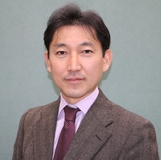TALK Driver's mental workload estimation based on the reflex eye movement
Date released: March 15, 2016
-
TALK Driver's mental workload estimation based on the reflex eye movement Date & Time:
Tuesday, March 15, 2016; 12:45 PM - 1:30 PM
-
Abstract:
Driving requires a complex skill that is involved with the vehicle itself (e.g., speed control and instrument operation), other road users (e.g., other vehicles, pedestrians), surrounding environment, and so on. During driving, visual cues are the main source to supply information to the brain. In order to stabilize the visual information when you are moving, the eyes move to the opposite direction based on the input to the vestibular system. This involuntary eye movement is called as the vestibulo-ocular reflex (VOR) and the physiological models have been studied so far. Obinata et al. found that the VOR can be used to estimate mental workload. Since then, our research group has been developing methods to quantitatively estimate mental workload during driving by means of reflex eye movement. In this talk, I will explain the basic mechanism of the reflex eye movement and how to apply for mental workload estimation. I also introduce the latest work to combine the VOR and OKR (optokinetic reflex) models for naturalistic driving environment.
-
Speaker:
Prof. Hirofumi Aoki
Nagoya University Dr. Hirofumi Aoki has been interested in human-machine-environment interaction in such areas as mechanical/automobile engineering, aeronautics/astronautics, and architectural/city planning. He received B.Eng. from Waseda University, and M.Eng. and Ph.D. from Tokyo Institute of Technology. During his Ph.D. course, he visited for one year at the Psychology Department, the University of California, Davis as a MEXT scholar. From 2004 till 2007, he stayed at the Man-Vehicle Laboratory, MIT as a postdoctoral associate as well as postdoctoral fellow of the National Space Biomedical Research Institute. From 2007, he worked at Toyota Motor Corporation, where he did research with NHTSA using the world largest driving simulator in TMC's Higashi-fuji Technical Center, plan and develop the advanced driver assistance system (ADAS). One of his inventions has been released from Lexus IS in 2013. After 6 years' experience in industry, he moved back to academia as an associate professor at the Mechanical Science and Engineering Department, Nagoya University, Japan. From 2014 Dr. Aoki is a professor at the Institute of Innovation for Future Society and the Green Mobility Collaborative Research Center, Nagoya University.
Dr. Hirofumi Aoki has been interested in human-machine-environment interaction in such areas as mechanical/automobile engineering, aeronautics/astronautics, and architectural/city planning. He received B.Eng. from Waseda University, and M.Eng. and Ph.D. from Tokyo Institute of Technology. During his Ph.D. course, he visited for one year at the Psychology Department, the University of California, Davis as a MEXT scholar. From 2004 till 2007, he stayed at the Man-Vehicle Laboratory, MIT as a postdoctoral associate as well as postdoctoral fellow of the National Space Biomedical Research Institute. From 2007, he worked at Toyota Motor Corporation, where he did research with NHTSA using the world largest driving simulator in TMC's Higashi-fuji Technical Center, plan and develop the advanced driver assistance system (ADAS). One of his inventions has been released from Lexus IS in 2013. After 6 years' experience in industry, he moved back to academia as an associate professor at the Mechanical Science and Engineering Department, Nagoya University, Japan. From 2014 Dr. Aoki is a professor at the Institute of Innovation for Future Society and the Green Mobility Collaborative Research Center, Nagoya University. -
Research Area: